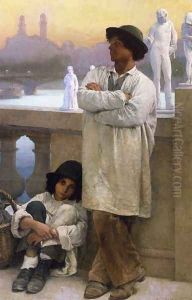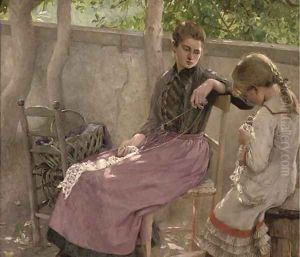Carl Ernst von Stetten Paintings
Carl Ernst von Stetten, also known as Karl Ernst von Stetten, was a German artist born on March 3, 1805, in Kempten, Bavaria. He was primarily known for his work as a painter and lithographer. Stetten came from a noble family, which often allowed him opportunities that were not available to many other artists of his time. Von Stetten's work is less widely known in comparison to his contemporaries, and as such, detailed records of his life and work are somewhat limited.
He showed an interest in the arts at an early age and likely received his initial training in his hometown. Von Stetten's style was influenced by the Biedermeier period, which was characterized by a sense of realism and straightforward representation in reaction to the prior Romantic period's emphasis on emotion and individualism. His works included portraits, landscapes, and genre scenes, which were typical of the Biedermeier style and reflected the middle-class sensibilities of the time.
Throughout his career, Carl Ernst von Stetten exhibited a strong work ethic and a dedication to refining his technique. He also worked as a lithographer, a process that involves drawing images onto a stone (or later a metal plate) and using this as a template to create prints. This medium was particularly popular during the 19th century for its ability to reproduce works of art for books and periodicals.
Carl Ernst von Stetten died on January 12, 1870, in Munich, Germany. While he may not have achieved the same level of fame as some of his contemporaries, his work remains a testament to the artistic styles and cultural attitudes of his era. His contributions to German art of the 19th century are preserved in various collections, offering insights into the period's aesthetic preferences and the social milieu of the Biedermeier era.


